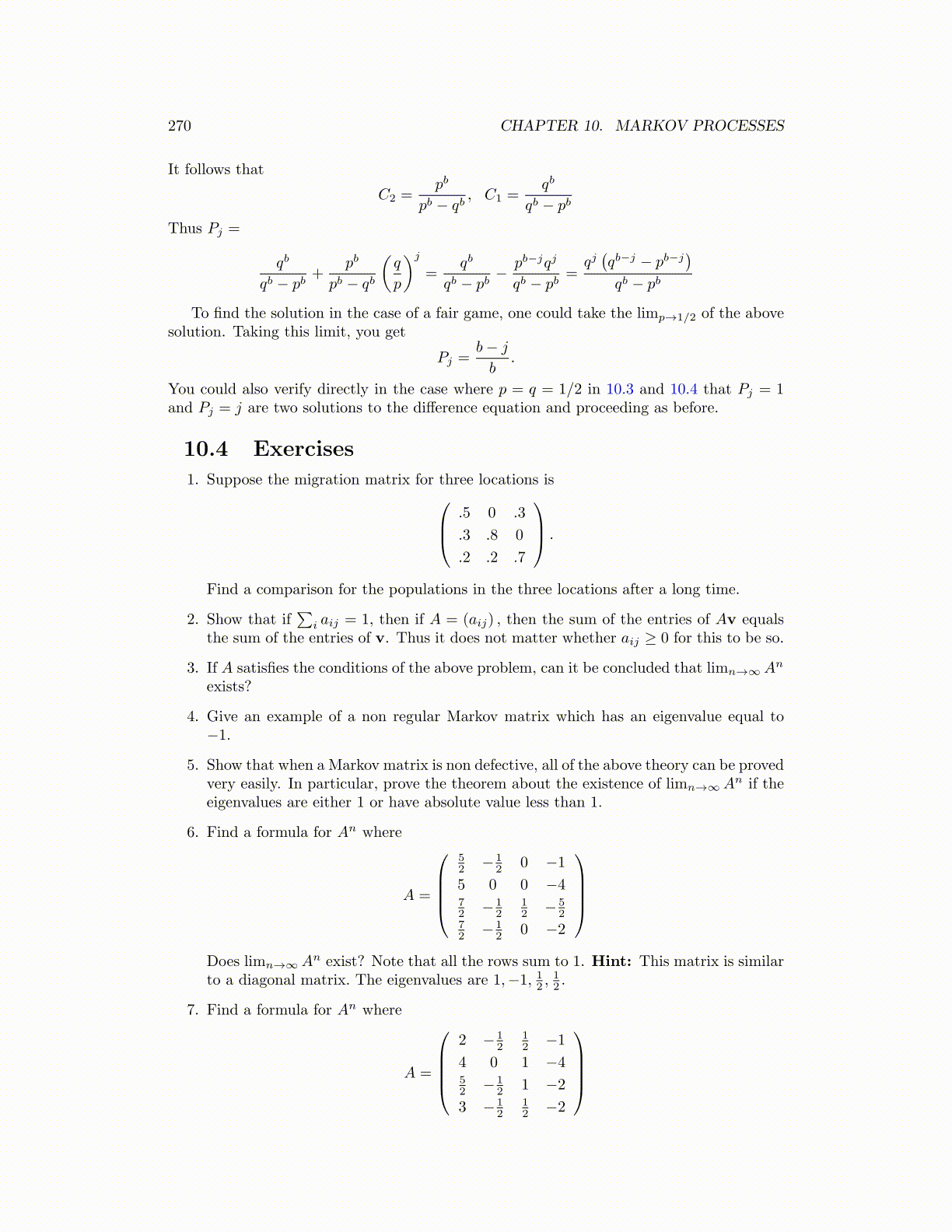
270 CHAPTER 10. MARKOV PROCESSES
It follows that
C2 =pb
pb − qb, C1 =
qb
qb − pb
Thus Pj =
qb
qb − pb+
pb
pb − qb
(q
p
)j
=qb
qb − pb− pb−jqj
qb − pb=qj(qb−j − pb−j
)qb − pb
To find the solution in the case of a fair game, one could take the limp→1/2 of the abovesolution. Taking this limit, you get
Pj =b− j
b.
You could also verify directly in the case where p = q = 1/2 in 10.3 and 10.4 that Pj = 1and Pj = j are two solutions to the difference equation and proceeding as before.
10.4 Exercises
1. Suppose the migration matrix for three locations is .5 0 .3
.3 .8 0
.2 .2 .7
.
Find a comparison for the populations in the three locations after a long time.
2. Show that if∑
i aij = 1, then if A = (aij) , then the sum of the entries of Av equalsthe sum of the entries of v. Thus it does not matter whether aij ≥ 0 for this to be so.
3. If A satisfies the conditions of the above problem, can it be concluded that limn→∞An
exists?
4. Give an example of a non regular Markov matrix which has an eigenvalue equal to−1.
5. Show that when a Markov matrix is non defective, all of the above theory can be provedvery easily. In particular, prove the theorem about the existence of limn→∞An if theeigenvalues are either 1 or have absolute value less than 1.
6. Find a formula for An where
A =
52 − 1
2 0 −1
5 0 0 −472 − 1
212 − 5
272 − 1
2 0 −2
Does limn→∞An exist? Note that all the rows sum to 1. Hint: This matrix is similarto a diagonal matrix. The eigenvalues are 1,−1, 12 ,
12 .
7. Find a formula for An where
A =
2 − 1
212 −1
4 0 1 −452 − 1
2 1 −2
3 − 12
12 −2